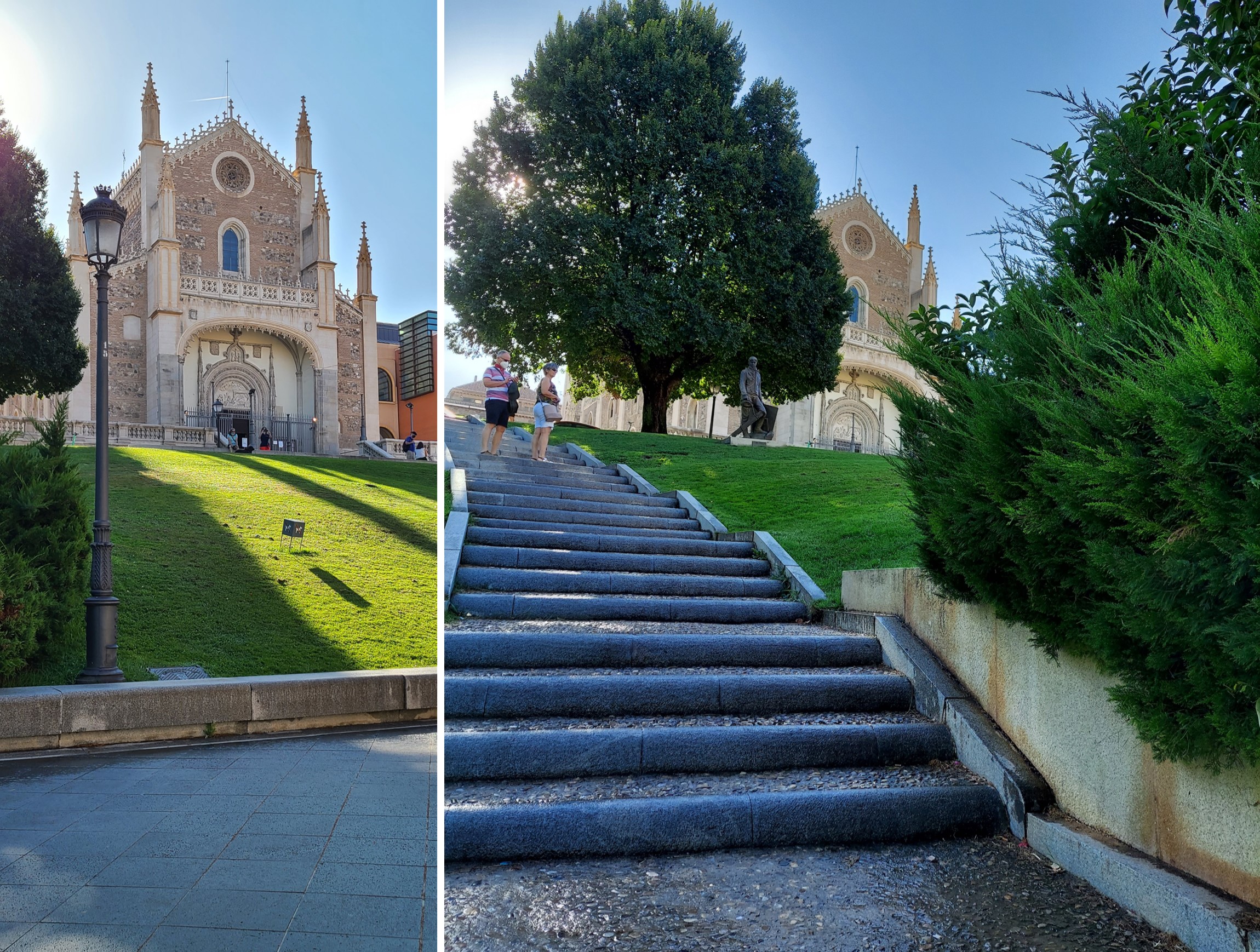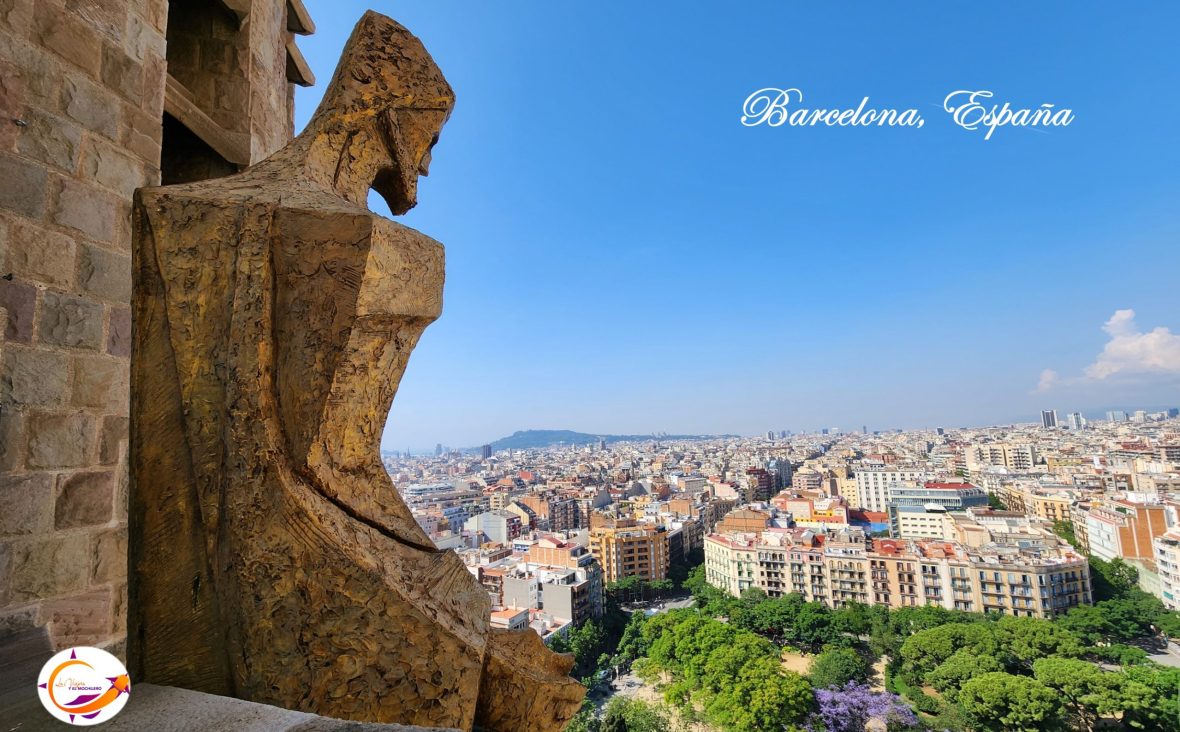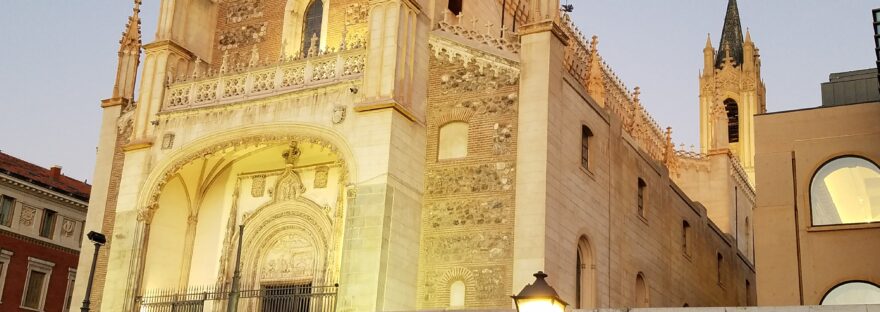From the first moment we saw her, we fell in love with her. That church that looms majestically as we approach the Prado Museum. We are talking about the Church of “San Jerónimo El Real”.
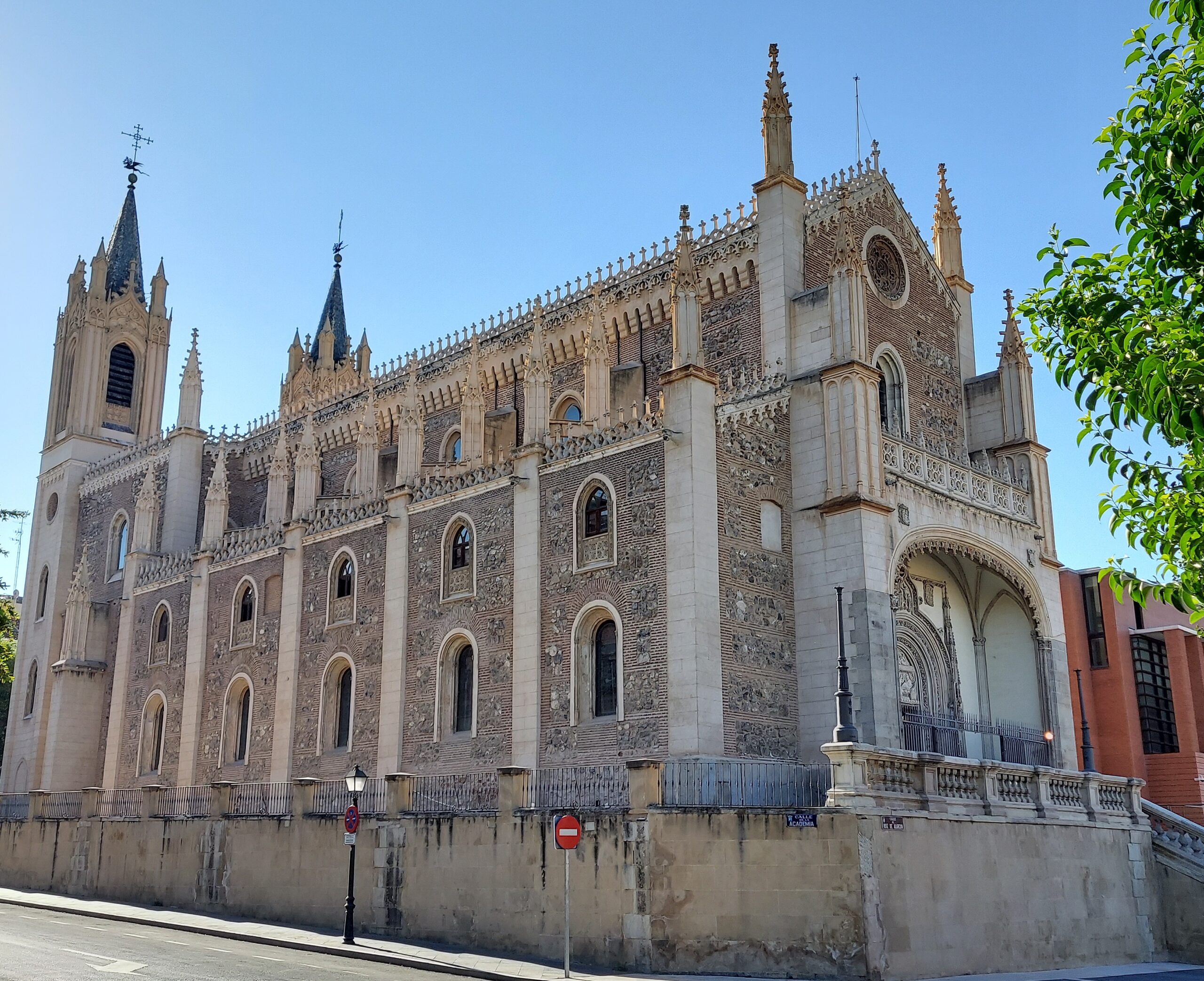
The Catholic Monarchs ordered the construction of a monastery in Madrid for the monks of the Order of St. Jerome, which also served as the accommodation for the Royal Family during their stays in the city. The construction began in 1502, concluding in 1505 both the temple and the monastery. The old monastery of “San Jerónimo el Real”, popularly known as “Los Jerónimos”, was one of the most important monasteries in Madrid. The structure is of late Gothic style with Renaissance influences of the early sixteenth century and it is precisely the church, one of the structures that remain of the old monastery.
Subsequently, the structure was used as a place of spiritual retreat for several monarchs. In addition, for centuries royal investitures were held here in the absence of a cathedral (at that time). And, it was precisely in the Church of San Jerónimo El Real that the wedding of Alfonso XIII took place. The construction in 1906 of the great stairway that leads to its main portal is attributed to said event. In addition, it was a frequent scene of funerals, swearing in of heirs and royal proclamations, the last of these being that of King Juan Carlos I.
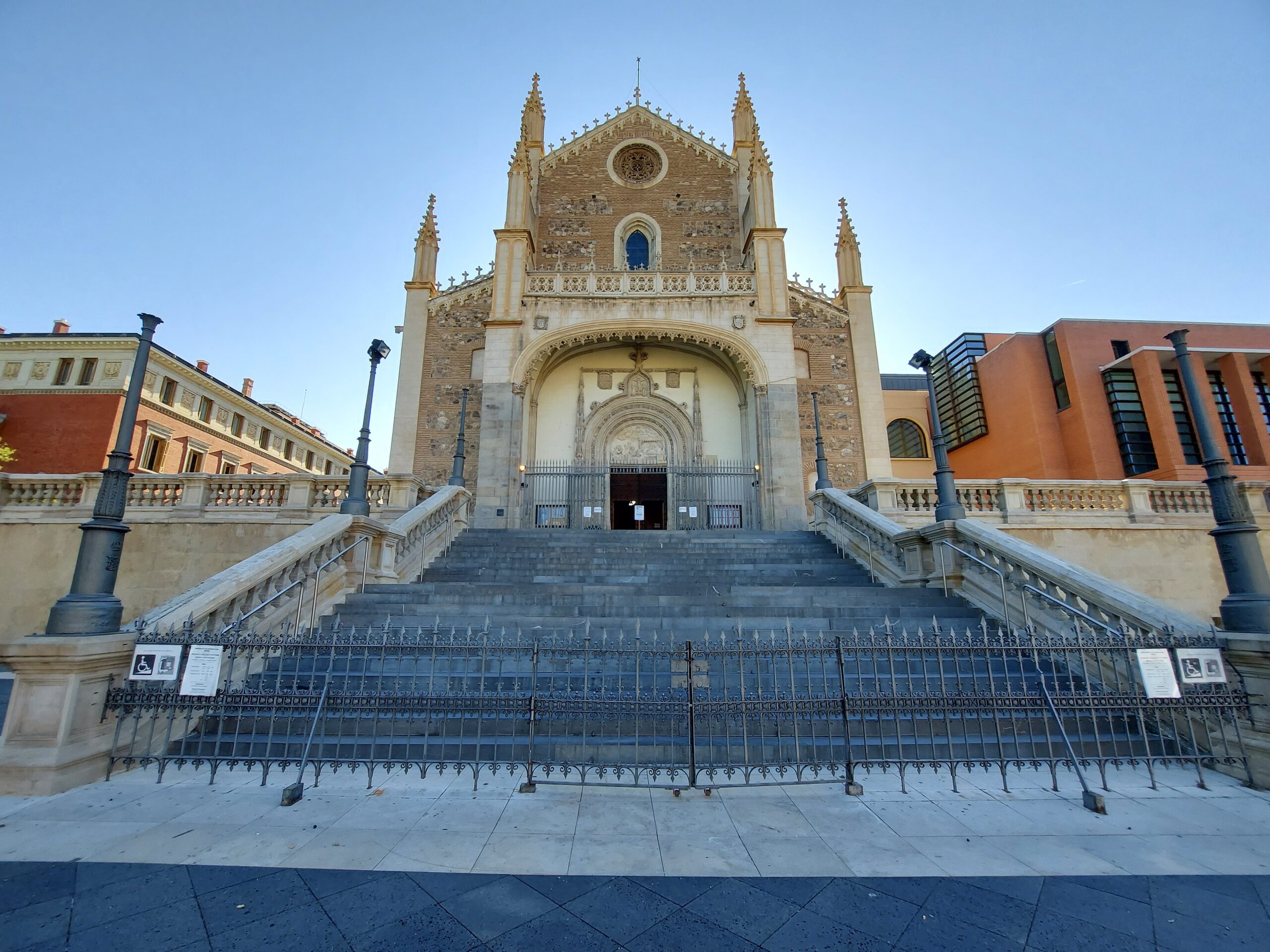
The most beautiful thing about the Church of “San Jerónimo El Real” is its exterior. The cover of its facade in which stone and brick are mixed is really a beauty. And although thinking about the mixture of these materials would seem to give it an aspect of hardness, it is quite the opposite. It is so delicate that it would look like fretwork or embroidery.
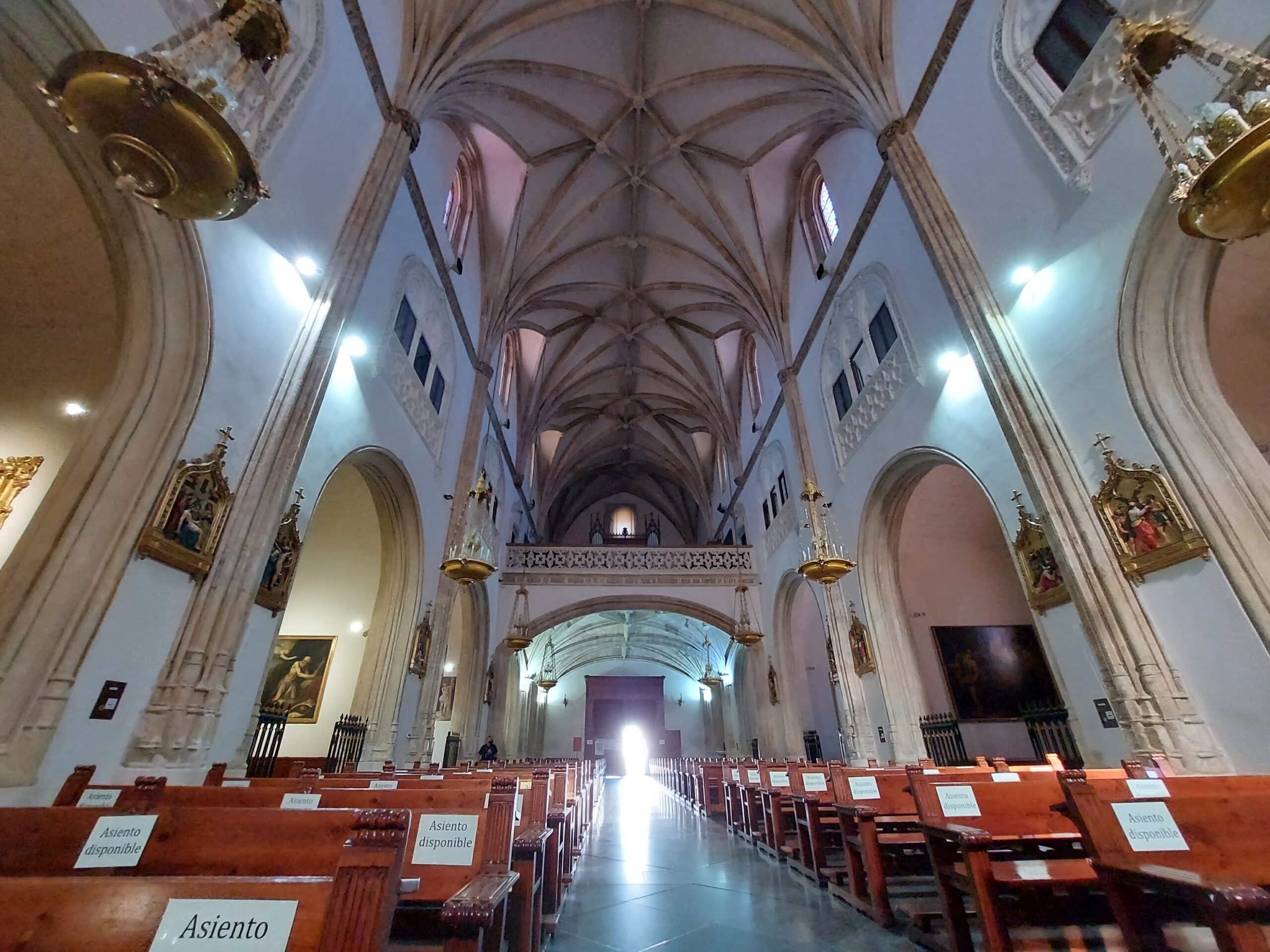
In the 19th century, the façade and the twin towers that frame the main chapel were rebuilt. However, the Gothic style has been preserved and can be seen in the towers, flying buttresses and buttresses topped by pinnacles, capitals and others.
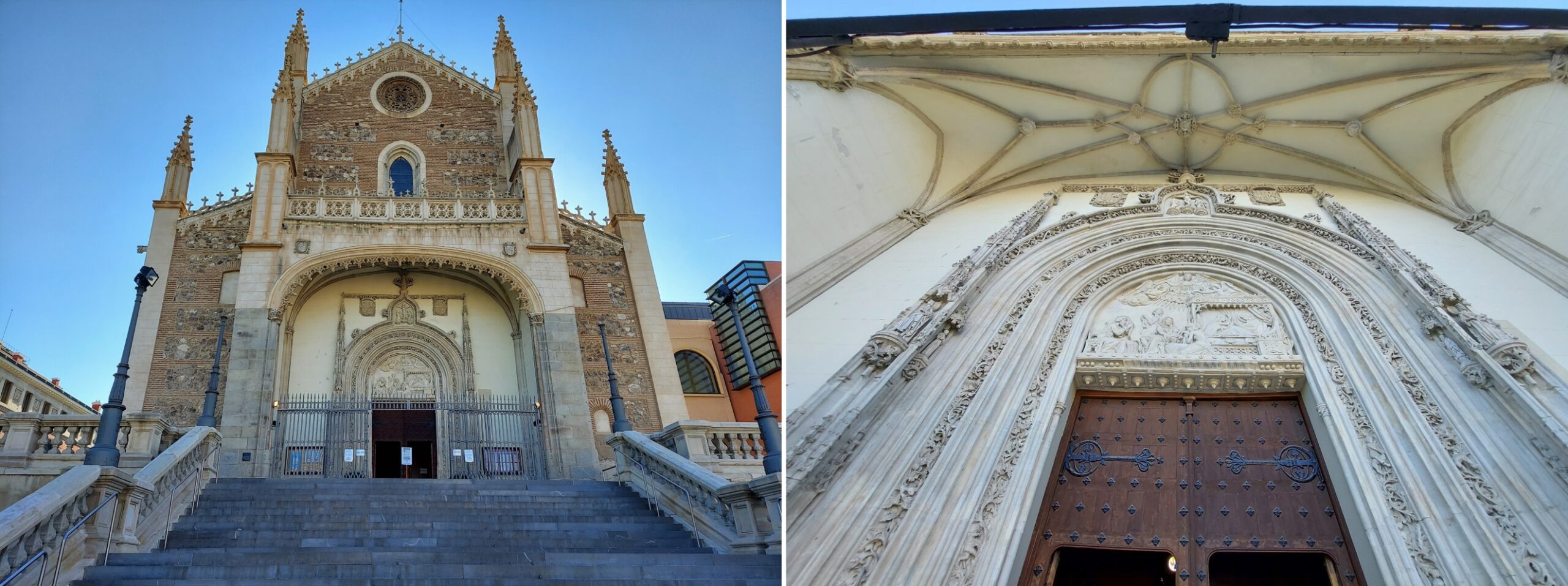
Throughout the twentieth century several works were carried out in the temple, among which are: the construction of the staircase and atrium for the wedding of Alfonso XIII; the restoration of the temple and expansion of the parish house; the construction of the hall under the atrium to the west; the project of expropriation of the atrium in the expansion of the Prado Museum, among others.
At the beginning of the 21st century, and as a consequence of the agreement to cede the cloister of the monastery to the Prado Museum, the church was completely restored, both inside and outside.
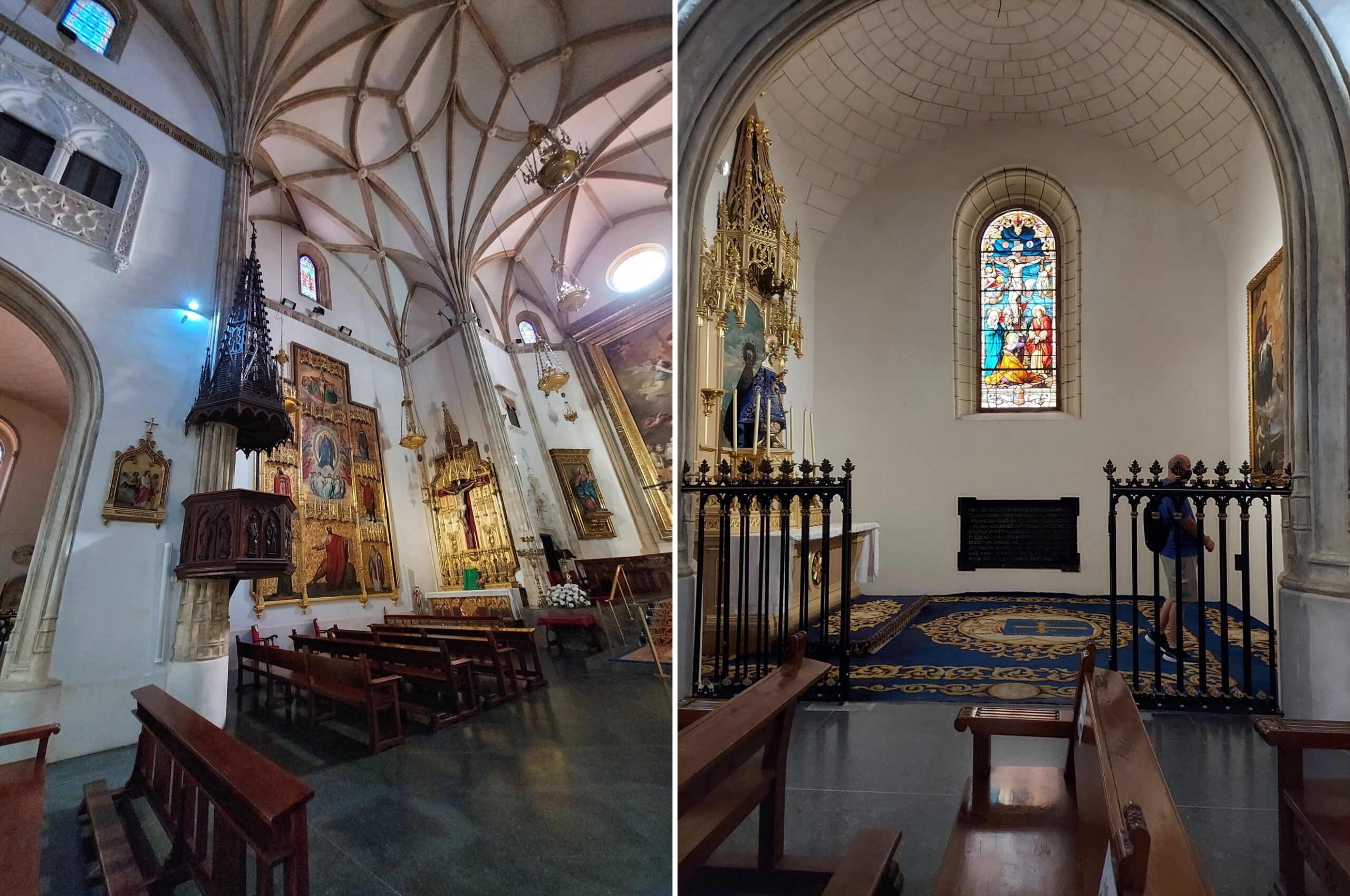
Inside, the layout of the main altar was changed, replacing “The Last Communion of Saint Jerome”, a large painting by Rafael Tejeo, in the apse, and the neo-Gothic altarpiece by José Méndez was placed in the transept. In addition, paintings on loan from the Prado were exhibited. During the restoration work, 16th century mural paintings and some very damaged Renaissance bas-reliefs appeared in one of the chapels.
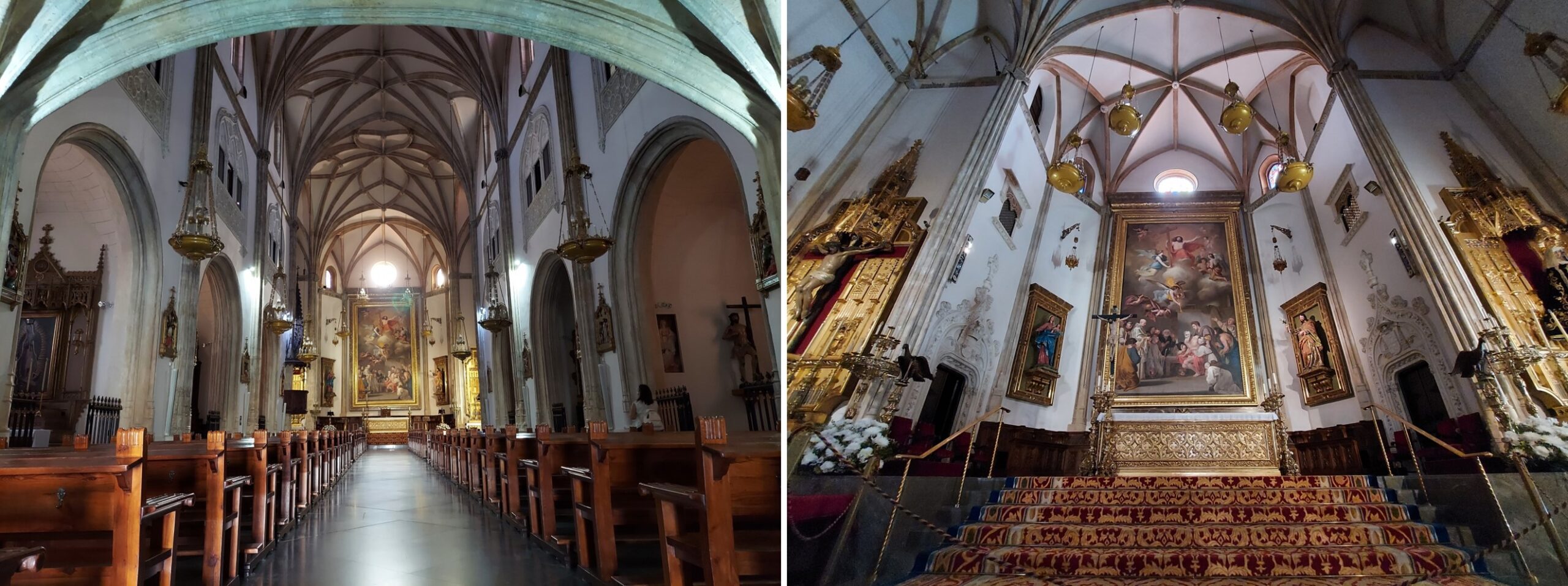
On the way to the Prado Museum, it is very difficult to miss “Los Jerónimos”. It is well worth the experience to climb the stairs and get close to this jewel.
